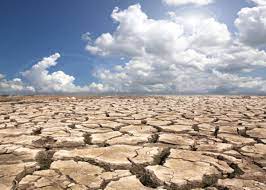El Niño, a climate phenomenon characterized by unusually warm ocean temperatures in the equatorial Pacific, has far-reaching effects on weather patterns worldwide. Beyond its well-documented impacts on precipitation and temperatures, El Niño also plays a significant role in influencing environmental impurities. In this blog post, we’ll explore how the El Niño phenomenon affects environmental impurities and what implications it has for ecosystems and human health.
Understanding El Niño: El Niño occurs irregularly, typically every two to seven years, and can last for several months to over a year. During an El Niño event, warm ocean waters shift eastward across the Pacific, altering atmospheric circulation patterns and triggering changes in weather and climate around the globe.
Impact on Air Quality: One of the ways in which El Niño affects environmental impurities is through its influence on air quality. Changes in precipitation patterns associated with El Niño can lead to droughts in some regions and increased wildfires in others. These wildfires release large amounts of smoke and particulate matter into the atmosphere, contributing to air pollution and reducing air quality.
Water Contamination: El Niño can also impact water quality by altering rainfall patterns and runoff patterns. Heavy rainfall in some areas can lead to flooding, which can wash contaminants such as pesticides, fertilizers, and sediment into waterways. This can result in increased levels of pollutants in rivers, lakes, and oceans, posing risks to aquatic ecosystems and human health.
Ocean Pollution: The warming of ocean waters during El Niño events can also exacerbate ocean pollution. Elevated sea surface temperatures can lead to coral bleaching, disrupting marine ecosystems and threatening biodiversity. Additionally, changes in ocean currents and circulation patterns can affect the distribution of pollutants, potentially spreading contaminants over larger areas.
Implications for Human Health: The impact of El Niño on environmental impurities has significant implications for human health. Poor air quality resulting from increased wildfires can exacerbate respiratory problems and cardiovascular diseases. Contaminated water sources can lead to waterborne illnesses and pose risks to communities that rely on fishing and agriculture for their livelihoods.
Conclusion: In conclusion, the El Niño phenomenon has complex and far-reaching effects on environmental impurities. From air pollution caused by wildfires to water contamination from runoff, El Niño events can have detrimental impacts on ecosystems and human health. Understanding these impacts is crucial for developing strategies to mitigate the effects of El Niño and protect the environment and public health.





